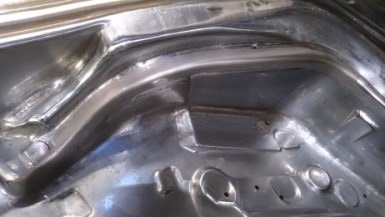As mentioned in the previous blog we know conventional machine shop practices used to repair plastics molds or metal forms require you to disassemble the machine and ship the components to your local finisher. But with selective plating, repairs can be made in place, with minimal disassembly or masking. Today we are discussing how it’s used to repair cavity damage.
Repairing Cavity Damage
Occasionally, plant or maintenance personnel will accidentally leave a foreign object such as a cap screw in the chrome-plated cavity. And, sometimes a molded part or runner may not be ejected properly. Under the pressures of injection molding, such objects will form an indentation in the cavity. With selective plating, copper or nickel is deposited to fill in the damaged area and is then blended in to re-form the cavity contour. The nickel repair is then selectively capped with nickel-tungsten, nickel semi-bright, or chrome to enhance mold release characteristics. Such repairs, along with nicks or dings in chrome or electroless-nickel plated cavities may be accomplished without the need to strip and re-chrome the entire mold cavity.
In the next blogs, you’ll learn about other applications that selective plating is suitable for, including:
- Corrosion Protection
- Resizing Core Pins and Bushings
- Flash Correction
- Machine Maintenance

 Chinese (Simplified)
Chinese (Simplified)  English (UK)
English (UK)  French
French  German
German  Spanish
Spanish  Swedish
Swedish 

